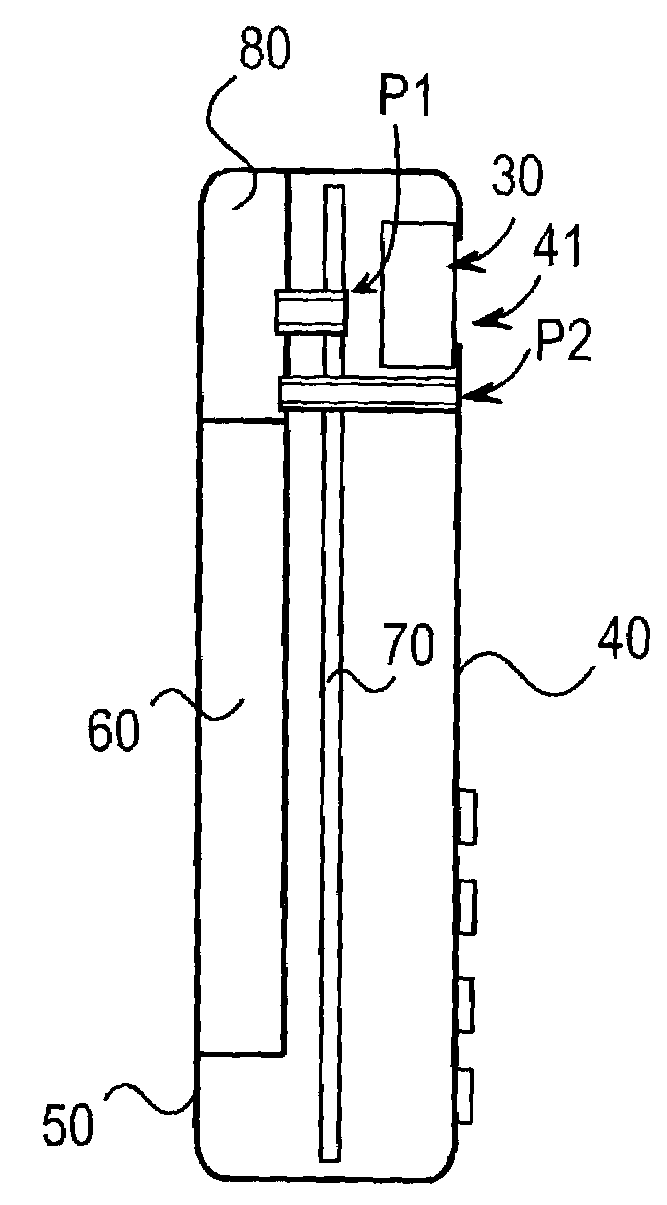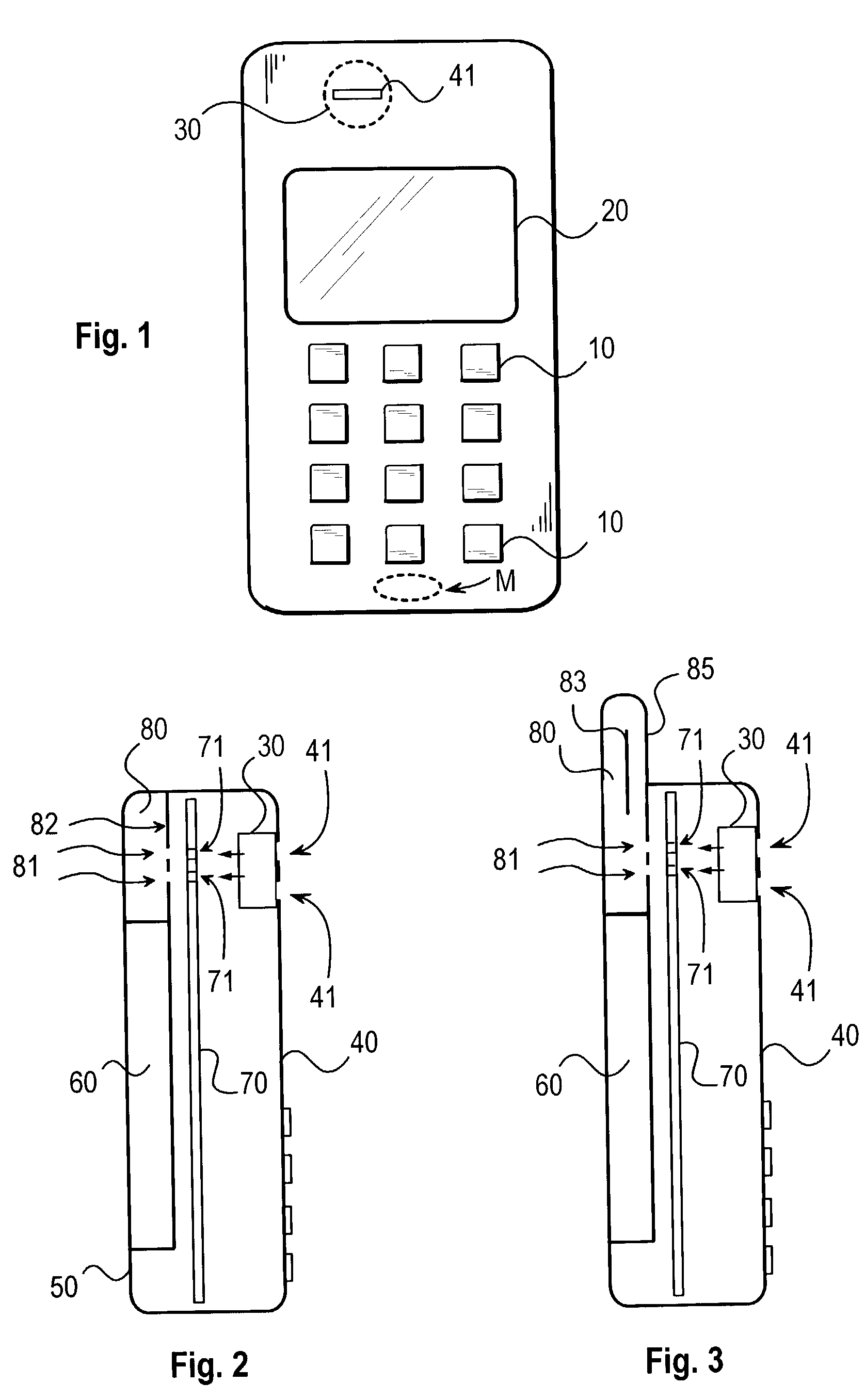Method for improving acoustic properties of a terminal device and a terminal device
a terminal device and acoustic technology, applied in the direction of transmission, antenna, frequency/directions obtaining arrangements, etc., can solve the problems of improving the leakage tolerance especially in small devices, affecting the acoustic performance of terminal devices, etc., to achieve the effect of improving the leakage tolerance, and changing the distance of the terminal devi
- Summary
- Abstract
- Description
- Claims
- Application Information
AI Technical Summary
Benefits of technology
Problems solved by technology
Method used
Image
Examples
Embodiment Construction
[0033]FIG. 1 represents the subscriber terminal device of the invention as seen from the front. As can be seen in the figure, the subscriber terminal device comprises keys 10, a display 20 and a speaker 30, which converts an electronic signal into an acoustic sound. In the implementation mode of FIG. 1, the speaker is located in the upper part of the device above the display. Correspondingly, the microphone M is typically located in the lower part of the device below the keyboard. This is a common implementation mode e.g. in mobile stations. When the user of a terminal device such as this is in a speech connection, he or she can hear the audio signal generated by the speaker of the subscriber terminal device the better the closer he or she keeps the speaker to his or her ear.
[0034]FIG. 2 illustrates one implementation mode of the terminal device as seen simplified from the side. The terminal device comprises a speaker 30, front part 40 of the cover and at least one hole 41 in it tha...
PUM
 Login to View More
Login to View More Abstract
Description
Claims
Application Information
 Login to View More
Login to View More - R&D
- Intellectual Property
- Life Sciences
- Materials
- Tech Scout
- Unparalleled Data Quality
- Higher Quality Content
- 60% Fewer Hallucinations
Browse by: Latest US Patents, China's latest patents, Technical Efficacy Thesaurus, Application Domain, Technology Topic, Popular Technical Reports.
© 2025 PatSnap. All rights reserved.Legal|Privacy policy|Modern Slavery Act Transparency Statement|Sitemap|About US| Contact US: help@patsnap.com



